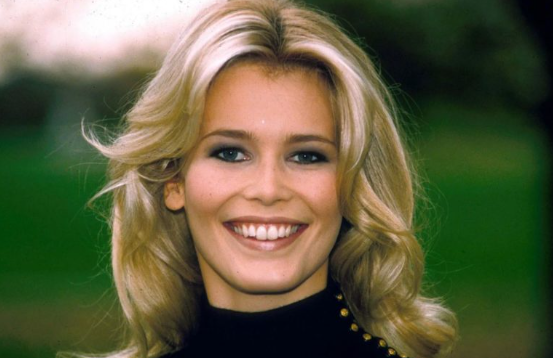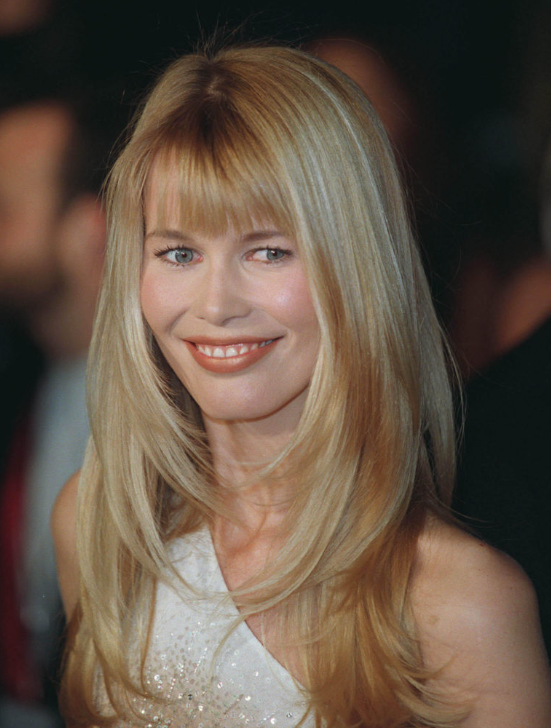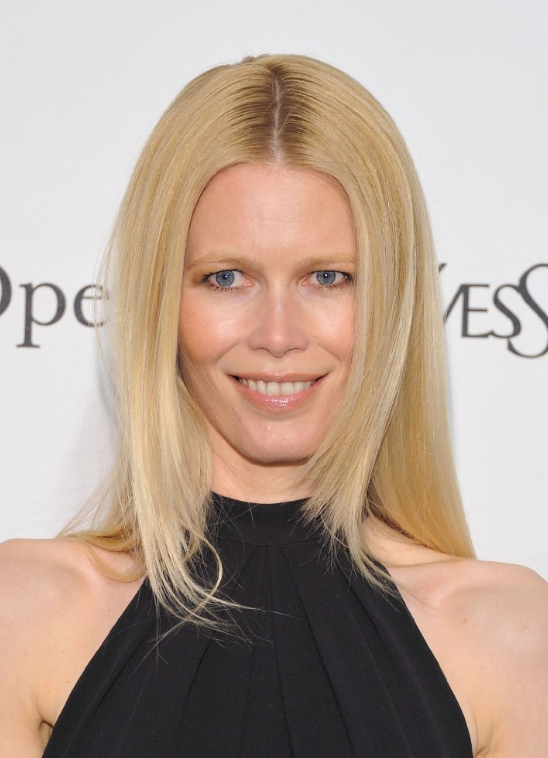In the glittering world of fashion, where trends rise and fade with the seasons, very few figures manage to achieve true immortality. Claudia Schiffer is one of those rare icons. In the 1990s, she wasn’t just a model—she was
the model, a global phenomenon who graced more than 1,000 magazine covers and walked the runways of the world’s most prestigious fashion houses. With her luminous blonde hair, porcelain complexion, and piercing blue eyes, she became one of the faces of an era often referred to as the golden age of supermodels.
More than three decades later, Claudia Schiffer remains as captivating as ever. Though she has gracefully shifted from full-time modeling to family life and creative ventures, her influence has not dimmed. Instead, it has evolved—just like she has. Today, at 53, she continues to prove that true beauty and elegance transcend age, leaving a legacy of authenticity, confidence, and resilience.
Claudia Schiffer’s story begins far from the catwalks of Paris or Milan. Born in 1970 in Rheinberg, a small town in Germany, she was a shy girl who never imagined herself under the spotlight. In fact, her early dream was to become a lawyer, following in her father’s footsteps. Fate, however, had other plans. At just 17, Schiffer was discovered by a modeling scout in Düsseldorf. Within months, she was whisked away into the high-speed, high-glamour world of international fashion. Her breakthrough came when she became the face of Guess jeans in the late 1980s, a campaign that skyrocketed her career and positioned her as the successor to icons like Brigitte Bardot. Designers and photographers were entranced by her timeless beauty, and soon she was working with the biggest names in the industry.

The 1990s belonged to Claudia Schiffer. She was part of the elite circle of “supermodels” that included Naomi Campbell, Cindy Crawford, Christy Turlington, and Linda Evangelista—a group that dominated not only fashion but also pop culture. These women were no longer anonymous models; they were celebrities, commanding high fees and unprecedented media attention. Schiffer’s collaborations with Karl Lagerfeld at Chanel remain some of the most iconic moments in fashion history. Lagerfeld often described her as the embodiment of modern glamour, dressing her in Chanel’s tweeds and pearls, which she carried with both freshness and sophistication. From the covers of
Vogue, Harper’s Bazaar, and Elle, to countless billboards across the globe, her image was inescapable. She didn’t just model clothes—she defined the era’s aesthetic.
Beyond fashion, Schiffer became a fixture of 1990s culture. She appeared in films, television commercials, and even music videos, solidifying her status as a global superstar. By the end of the decade, she had cemented her place in history as one of the most photographed women in the world.

Despite her meteoric rise, Schiffer always knew there was more to life than endless runways and flashing cameras. After years of nonstop travel and grueling schedules, she began to step back from the industry to pursue balance and personal happiness. In 2002, she married British film director Matthew Vaughn. The couple went on to have three children, and Schiffer chose to devote much of her time to motherhood. For many fans, this move was surprising—why would one of the world’s most successful models slow down? But for Claudia, the answer was simple: she wanted to embrace a more grounded life. Still, she never fully left fashion. Instead, she carefully curated her appearances, occasionally returning for select campaigns, magazine shoots, or runway cameos. Each time she reemerged, she reminded the world of her enduring allure.
Like many celebrities, Claudia Schiffer has faced intense public scrutiny about her appearance. Fans who adored her in the 1990s sometimes express surprise that she looks different today—forgetting that time transforms everyone. Some critics have even made unkind comments about her looking “older” or “changed.” But Schiffer has consistently resisted the pressure to conform to unrealistic beauty standards. Unlike many in the industry, she has avoided cosmetic surgery, fillers, or invasive treatments, instead choosing to embrace a natural approach. She takes care of herself through healthy living, balanced habits, and self-acceptance.

“Yes, I look different than I did at 20,” she has said in past interviews. “But that’s life. I’m proud of every stage, every moment. Beauty is not about chasing youth—it’s about confidence and authenticity.” This perspective is refreshing in a culture that often equates beauty with eternal youth. By embracing change rather than fighting it, Schiffer has become a role model for women everywhere, showing that aging can be a process of empowerment rather than fear.
Claudia Schiffer’s influence goes beyond her modeling legacy. In recent years, she has pursued creative projects, including curating art and fashion exhibitions, producing films with her husband, and launching her own collaborations in fashion and beauty. Her voice carries weight, not just because of her fame but because of her lived experience at the highest levels of an often unforgiving industry. Her occasional runway appearances, like her return for Chanel or Versace tributes, create waves of excitement—proof that her star power remains as strong as ever. Younger generations of models often cite her as an inspiration, a symbol of elegance, professionalism, and staying true to oneself.

From a shy girl in Rheinberg to the face of global fashion, Claudia Schiffer’s journey is nothing short of extraordinary. She ruled the 1990s, left an indelible mark on fashion, and then chose to redefine success on her own terms—through family, authenticity, and natural beauty. Today, at 53, Claudia Schiffer stands as a testament to the idea that true beauty is not frozen in time. It evolves, deepens, and becomes more meaningful with each stage of life. She remains glamorous, not because she looks the same as she once did, but because she embodies confidence, wisdom, and grace. For millions, Claudia Schiffer is still more than just a supermodel—she is an icon, a woman who showed the world that it’s possible to shine at every age.


